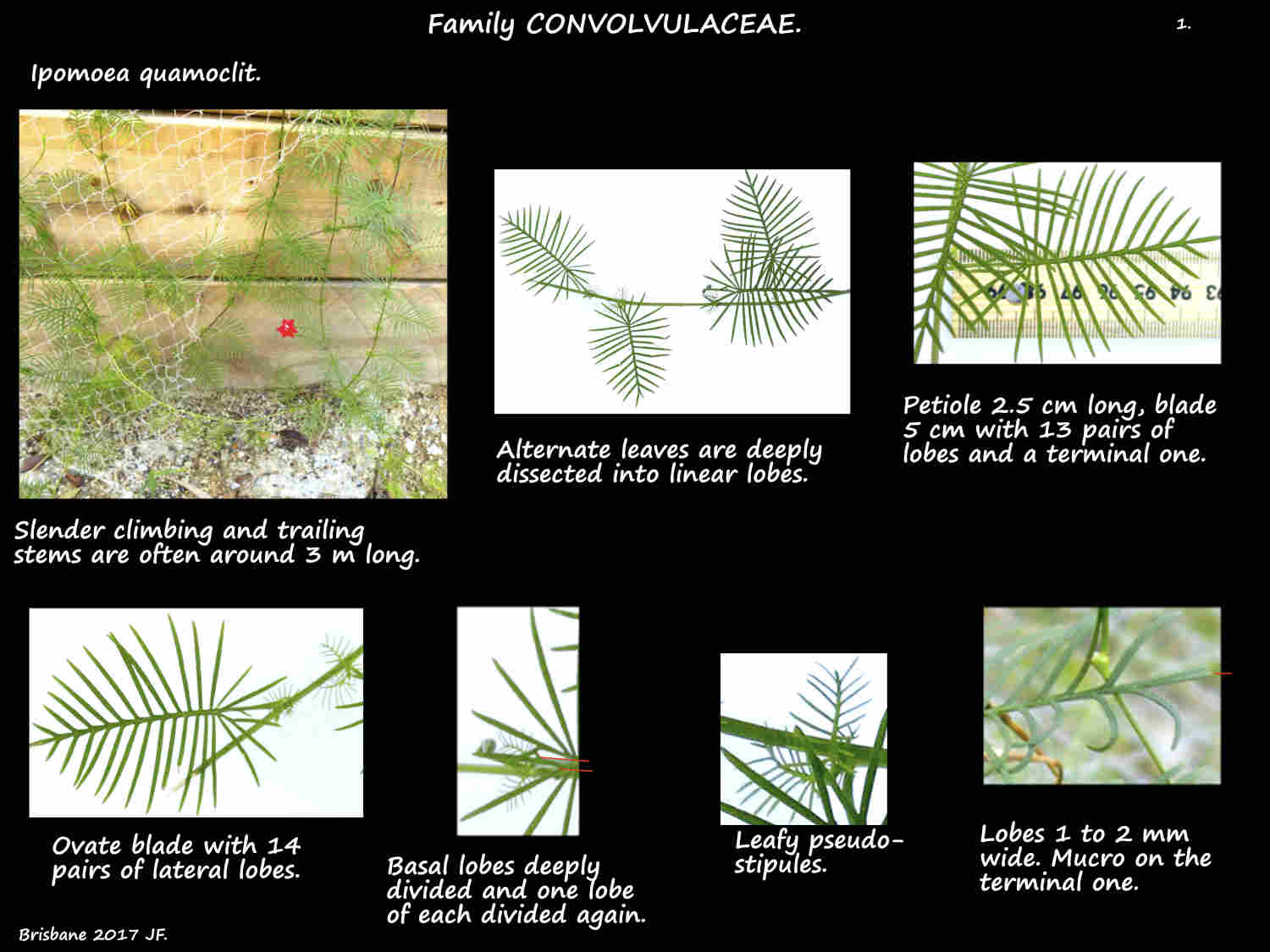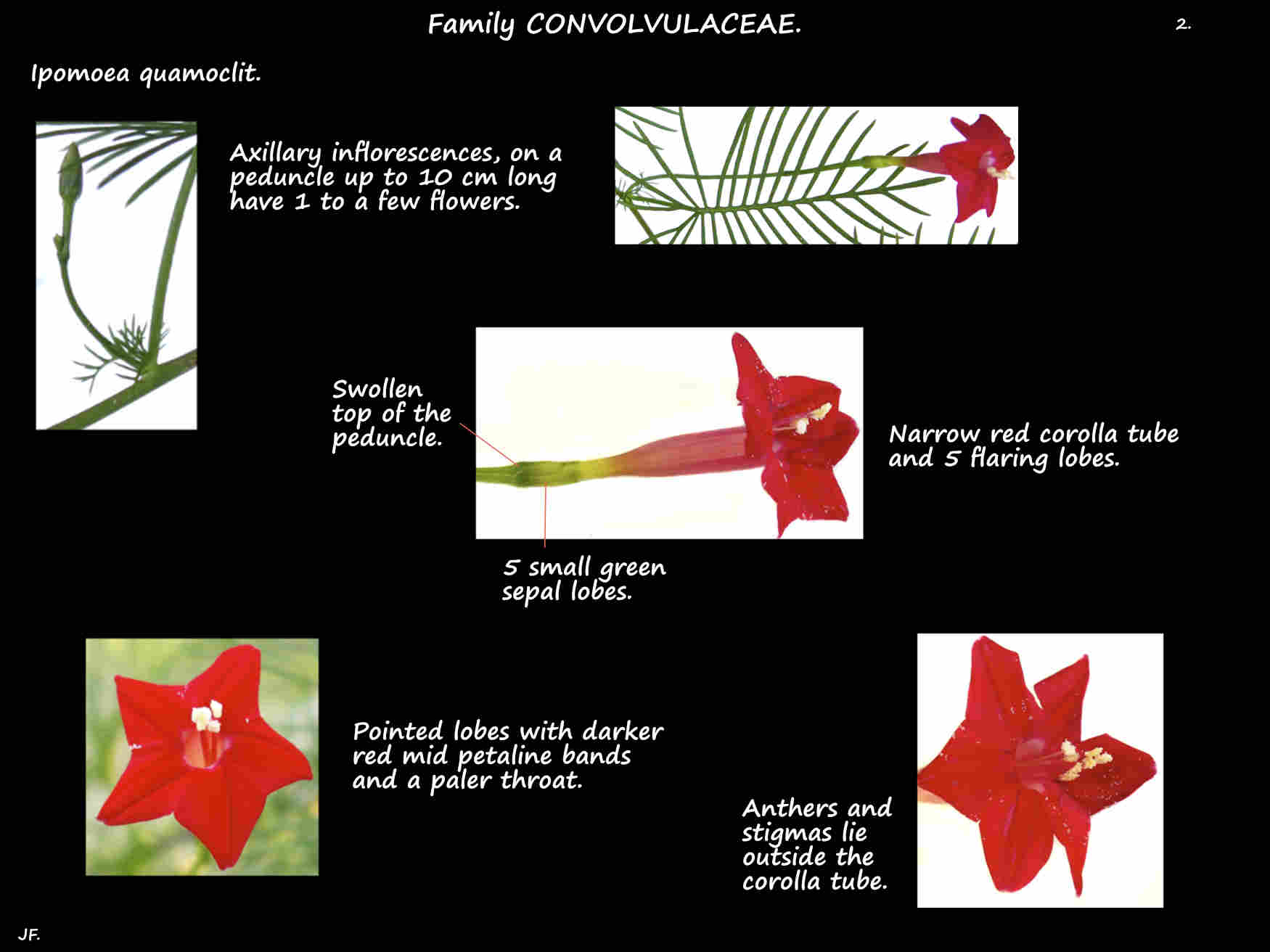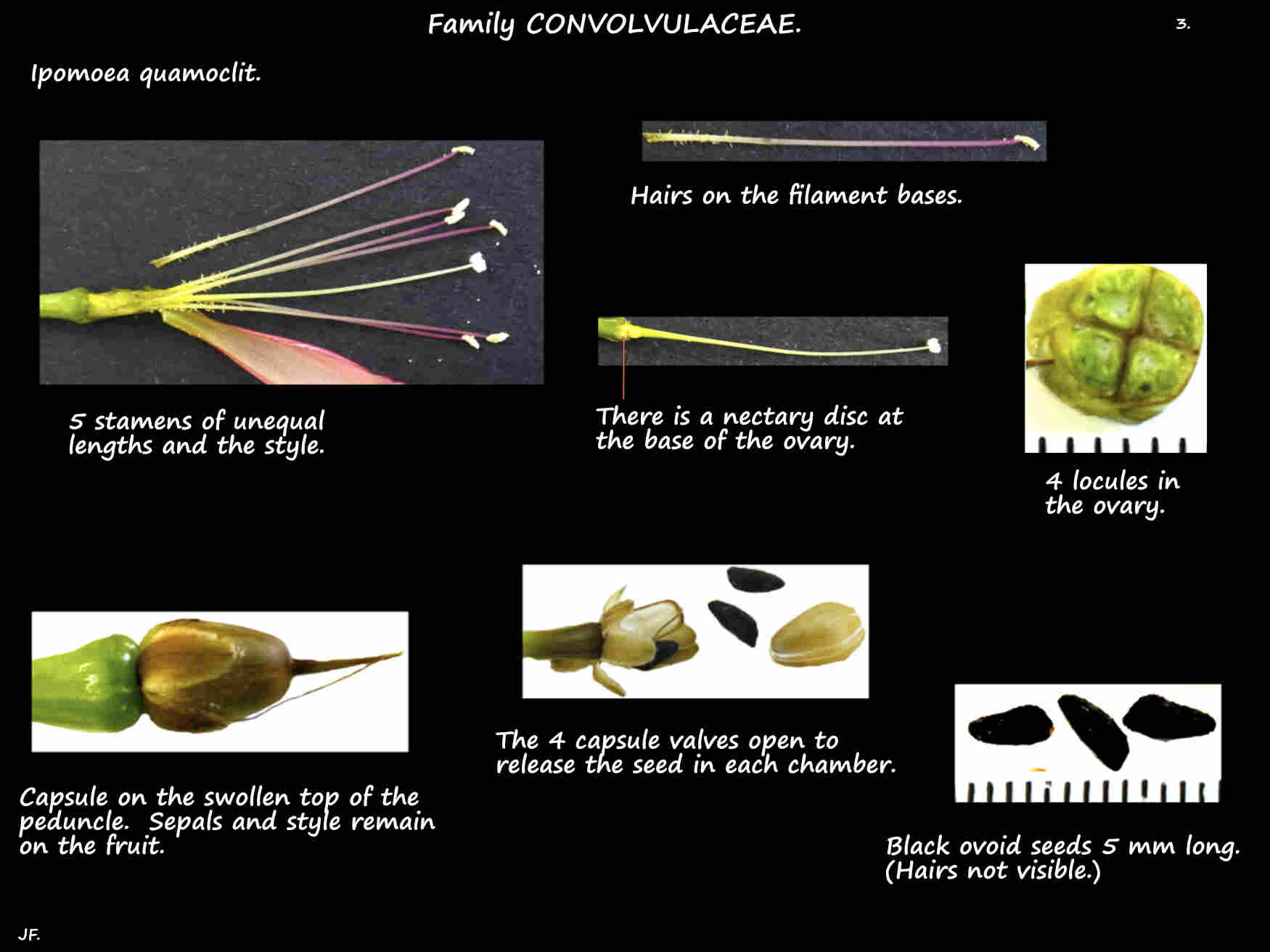Ipomoea quamoclit.
The Cypress or Cardinal vine has been known as Convolvulus quamoclit.
The exotic plant has become naturalised in areas of Queensland.
It is used as a garden plant but is weed in the S. E. of the state.
They are an annual or perennial twining vine with thin fragile stems 3 (6) m long.
There are no hairs on the stems, leaves or inflorescences.
The alternately arranged leaves are on petioles up to 3 or 4 cm long.
The ovate blades are up to around 6 cm long and 3 cm wide.
They are deeply dissected, almost to the midrib into 10 to 13 (8 to 18) pairs of linear lobes.
There is an odd terminal lobe and the basal pair are often divided sometimes the the midrib.
Only 1 to 2 mm wide the longest lobes are up to 2 cm long.
Lobes have pointed tips and the terminal one has a mucro (short abrupt point).
There are often leaf-like pseudo-stipules at the base of the petiole.
These are the small leaves of an axillary leaf bud.
Axillary inforescences are 1 to a few flowers on a peduncle from 2 to 10 (14) cm long.
On the peduncle are two 1 mm long elliptic bracts.
The trumpet-shaped flowers are on stalks or pedicels up to 2 cm long with a swollen top.
The calyx has 5 free oblong to elliptic slightly unequal sepals around 5 mm long and 2.5 mm wide.
The inner pair are slightly longer than the outer pair with the fifth in between.
They have a thin almost transparent margin and a tiny mucro near the tip.
The 5 petals form a trumpet-shaped corolla.
The cylindrical tube is up to 3 or 3.5 cm long and the top, of 5 flaring pointed lobes is around 2 cm across.
It is deep red with darker mid petaline bands on the lobes and a paler throat.
The 5 unequal stamens have hairs on the base.
The anthers, opening through longitudinal slits lie outside the tube.
The superior ovary has 4 locules each with 1 ovule and 1 style with a bi-lobed stigma that lies among the anthers.
The fruit are ovoid brown capsules up to 1 cm long.
There is often an apical beak from the base of the style.
Capsules open into 4 sections or valves each with 1 seed.
The black ovoid seeds, around 5 mm long have patches of short hairs.
J.F.





